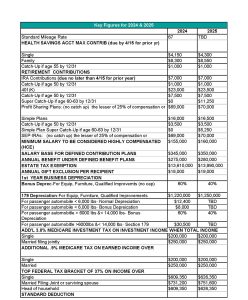This is the final article in a series on the four ways to grow your business.
Again, those four ways are:
1. INCREASE THE NUMBER OF CUSTOMERS (OF THE TYPE YOU WANT)
2. INCREASE THE BUYING FREQUENCY
3. INCREASE THE AVERAGE DOLLAR VALUE OF A SALE
4. INCREASE THE EFFECTIVENESS OF OPERATION
In previous articles our focus has been on increasing revenues through more customers, more sales transactions per customer and larger sales per transaction. This month we’re going to look at the fourth way to grow your business and that’s increasing the effectiveness of your systems.
To improve the systems in your business means you’ll need to spend more time working ON your business, rather than IN it. This is difficult for most small business owners because they’re usually too busy doing what the business does instead of working on developing a more effective business.
Michael Gerber, in his outstanding book “The E Myth – Why Most Small Businesses Don’t Work and What To Do About It”, challenges owners to pretend that their business is a prototype for 5000 more just like it. In other words, work ON your business as though you were designing an operation that will be replicated over and over to achieve a predictable result. With this mind set you’ll begin to pay attention to every detail that impacts the outcomes you want to achieve.
Gerber calls the process of improving the effectiveness of a business the “Business Development Process”. The foundation of the process is three distinct activities through which you can pursue the natural evolution of your business. They are: Innovation, Quantification and Orchestration.
Innovation
For most businesses, innovation will not involve the commodity but the process by which it is sold. How the business interacts with the customer is more important than what is being sold. Innovation is the heart of every successful business. It asks the question:
What is standing in the way of my customer getting what he wants from my business?
Positive innovations will not only set you apart from your competition but will also improve the desired result from a particular process. A simple example of an innovation may be changing the way you or sales people greet a customer coming into your store.
Innovation by definition will require change, which for most people is a struggle. If you want to improve the effectiveness of your business, be prepared to let go of old paradigms and develop new ones.
Quantification
Quantification helps you determine whether an innovation is working. Gerber defines quantification as the numbers related to your marketing process that are recorded and used to find and keep customers (the main purpose for any business).
How can you know if a system is working unless you quantify it? As I keep repeating, “What you can measure you can manage”. Seemingly small innovations may have a significant impact on your profit.
Begin by quantifying everything related to how you do business. From how many customers call your business each day to which days are the busiest. Without the numbers, you can’t possibly know where you are, let alone where you’re going. With the numbers, your business will take on a totally new meaning. It will come alive with possibilities.
Orchestration
Once you innovate a process and quantify its impact on your business, once you find something that works better than what preceded it, it’s time to orchestrate the whole thing. Orchestration is the elimination of distraction, or choice from the operation level of your business. It is the design and implementation system.
The orchestration of a predictable system will allow you to give your customers what they want every single time. This type of consistency will keep them coming back time and time again. Without orchestration, you’ll be vulnerable to the unpredictability of your people and your customers may not always get what they want.
Now you’ve innovated, quantified and orchestrated each of the major processes of your business. Are you done? Absolutely not! You must continue to innovate, quantify and orchestrate, because the world, moving as it does, will not tolerate a stationary object.
I hope you’ll begin to implement some of the strategies covered in this series. If you do, you may find your business has potential you never realized it had.
LSL is committed to helping our small business clients succeed. That’s why we created the P3 Group. The P3 Group of accountants and advisors want to be your Peak Performance Partners by providing, compliance, performance and strategic services that will help your business reach its full potential and run smoothly with, or without you. Call us to schedule a free consultation and business performance assessment at 949.829.8299.




